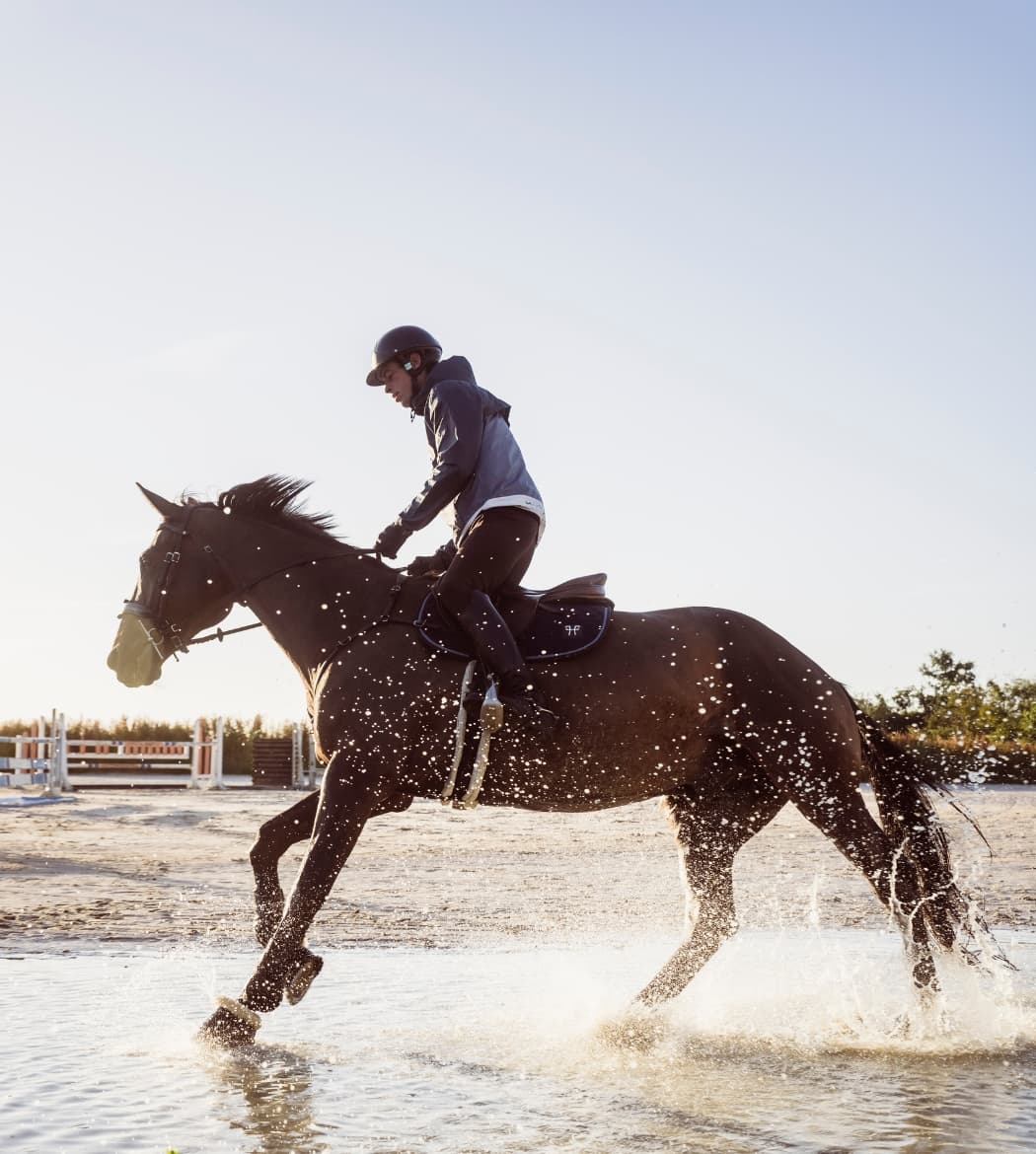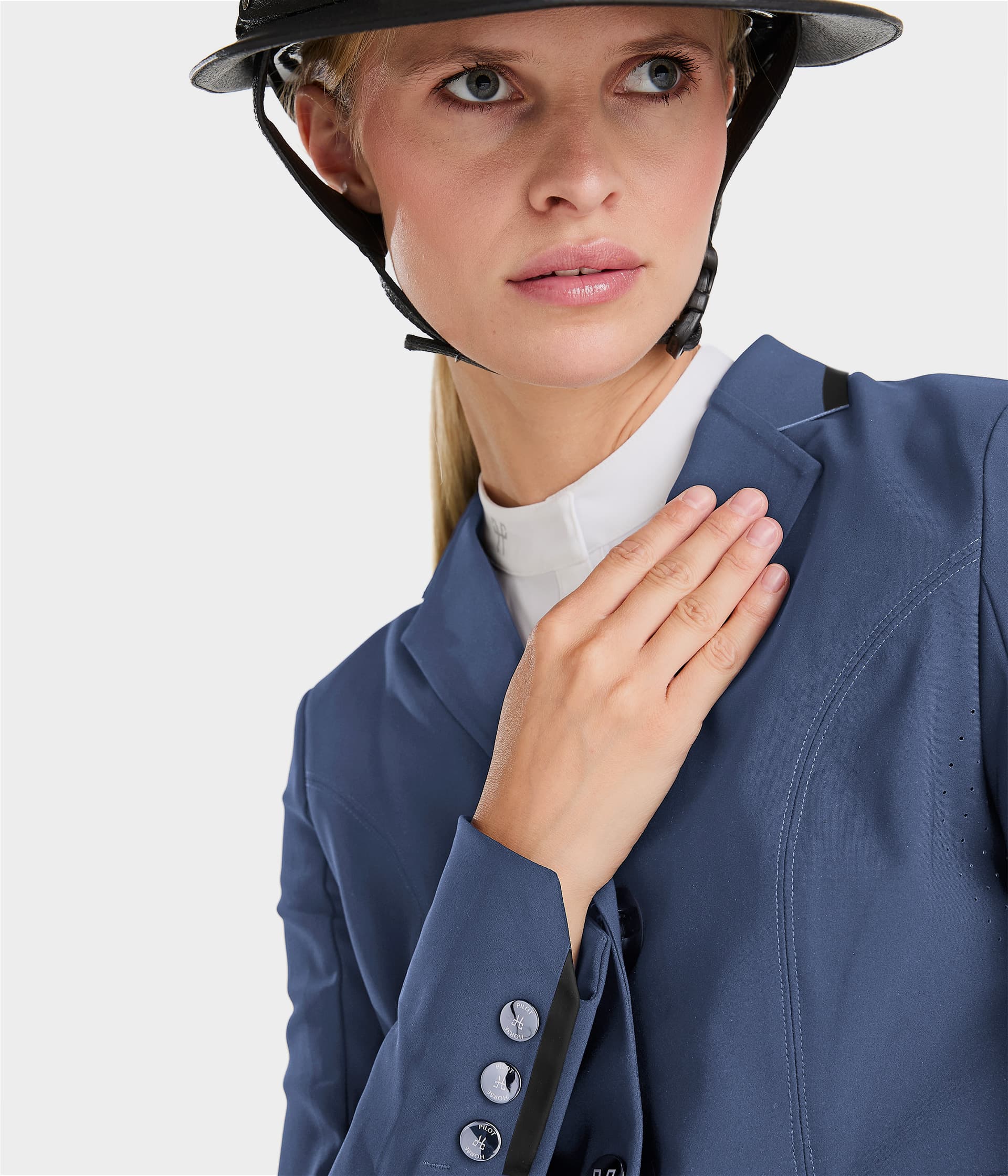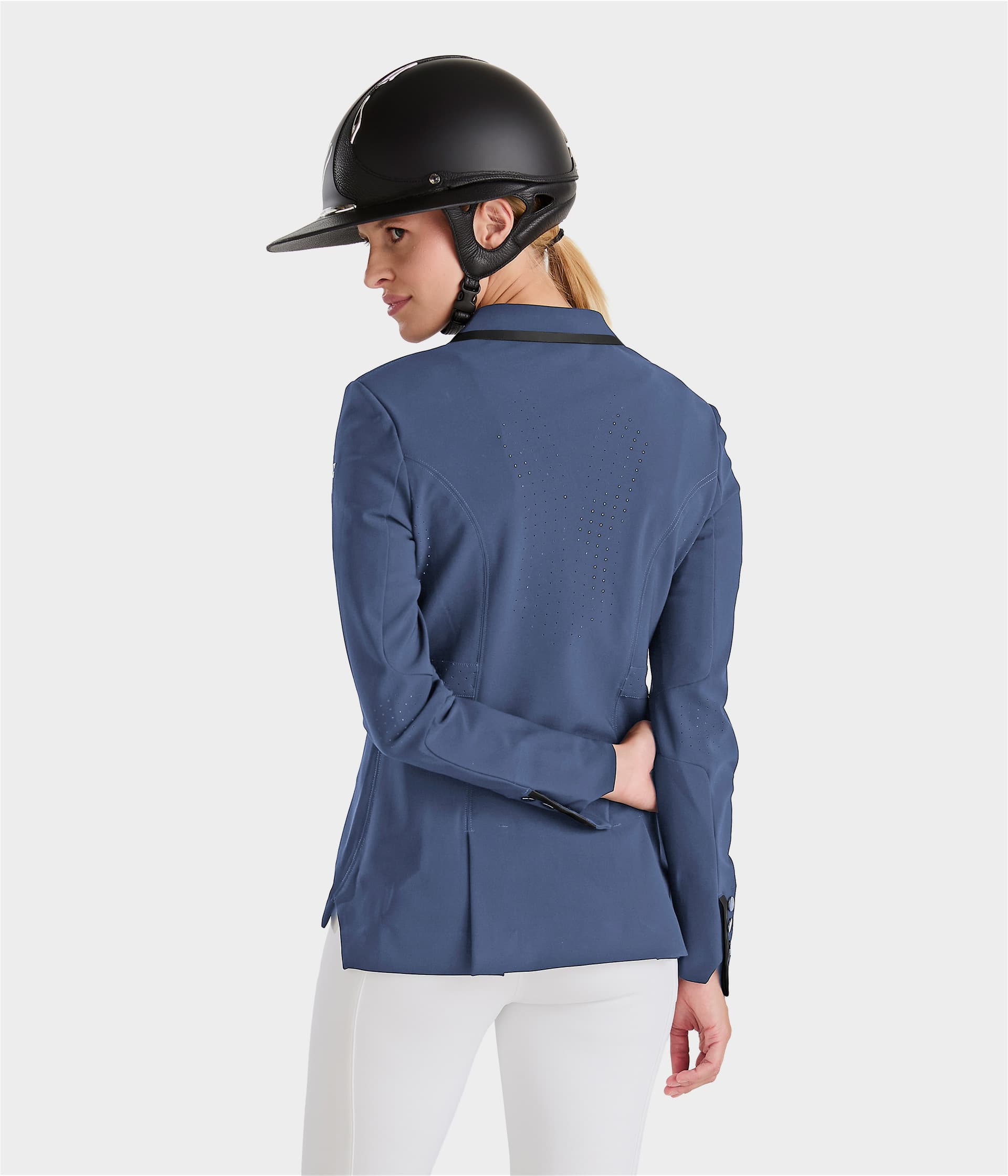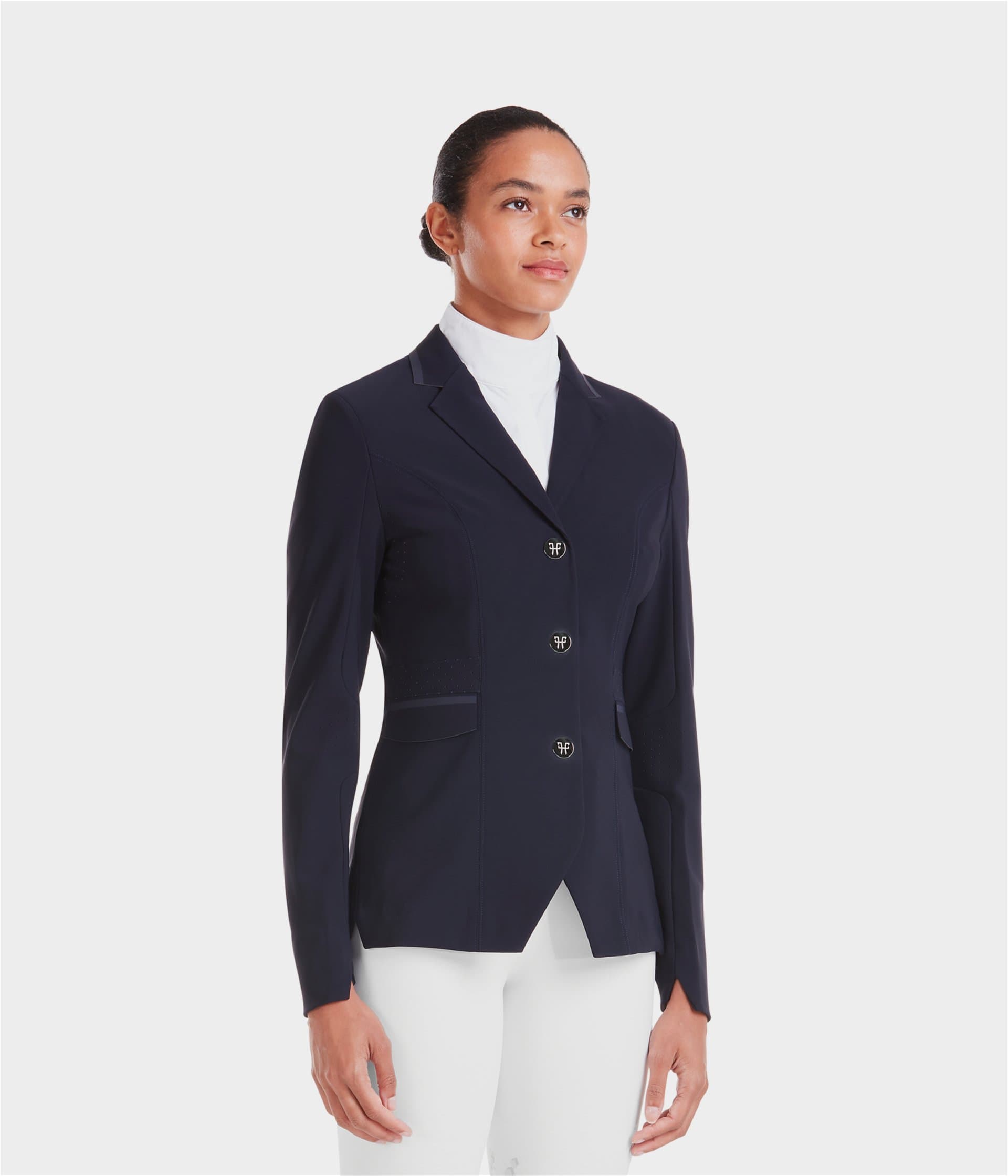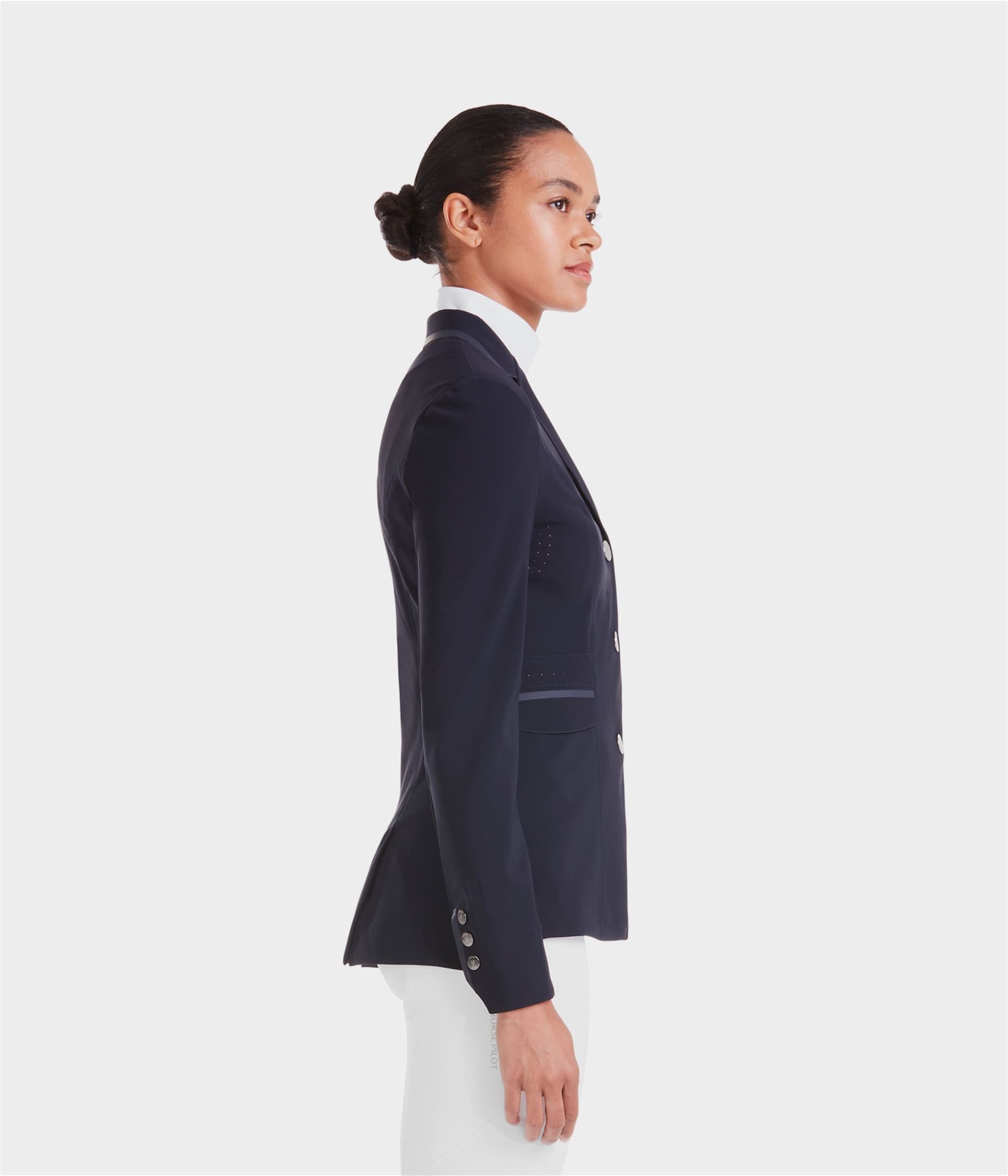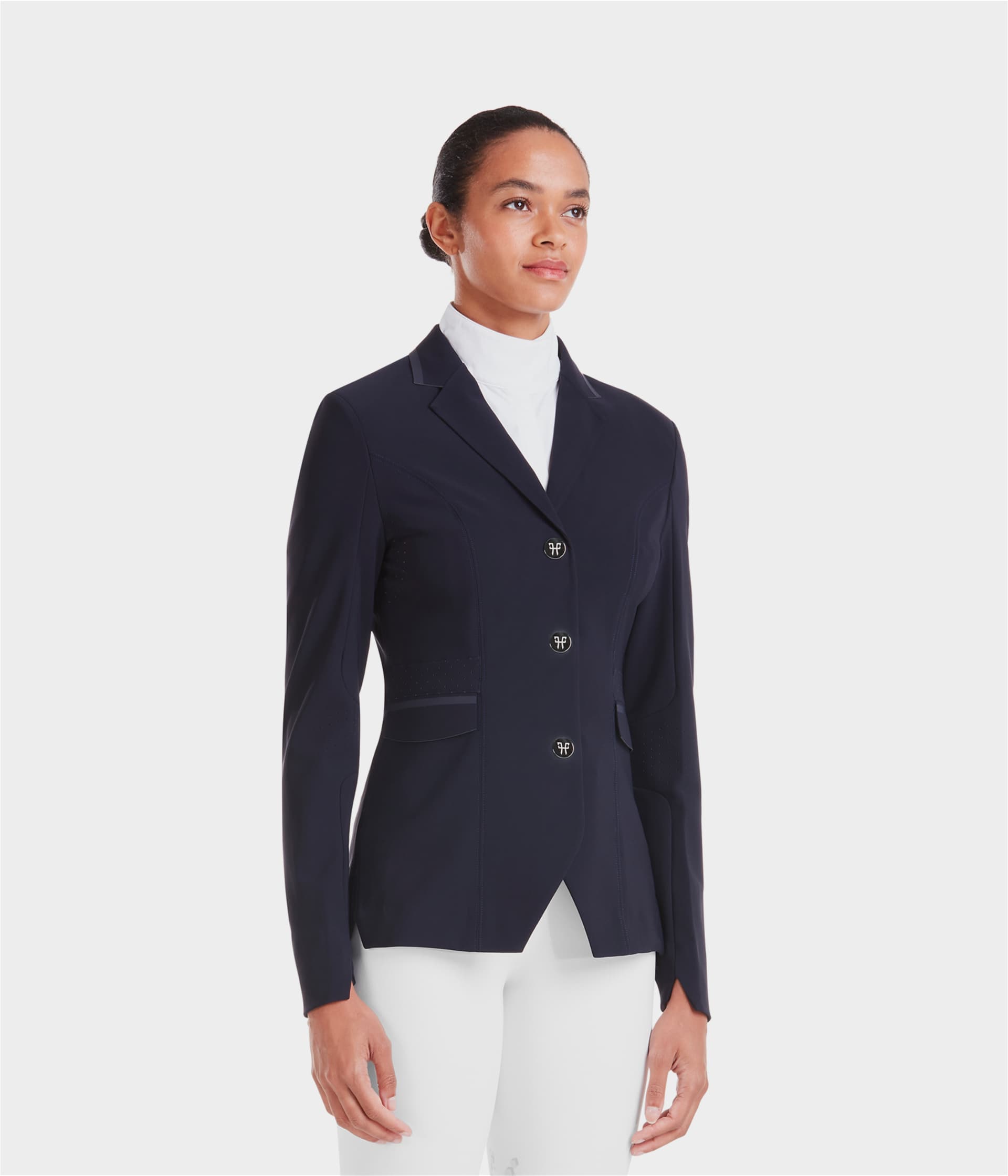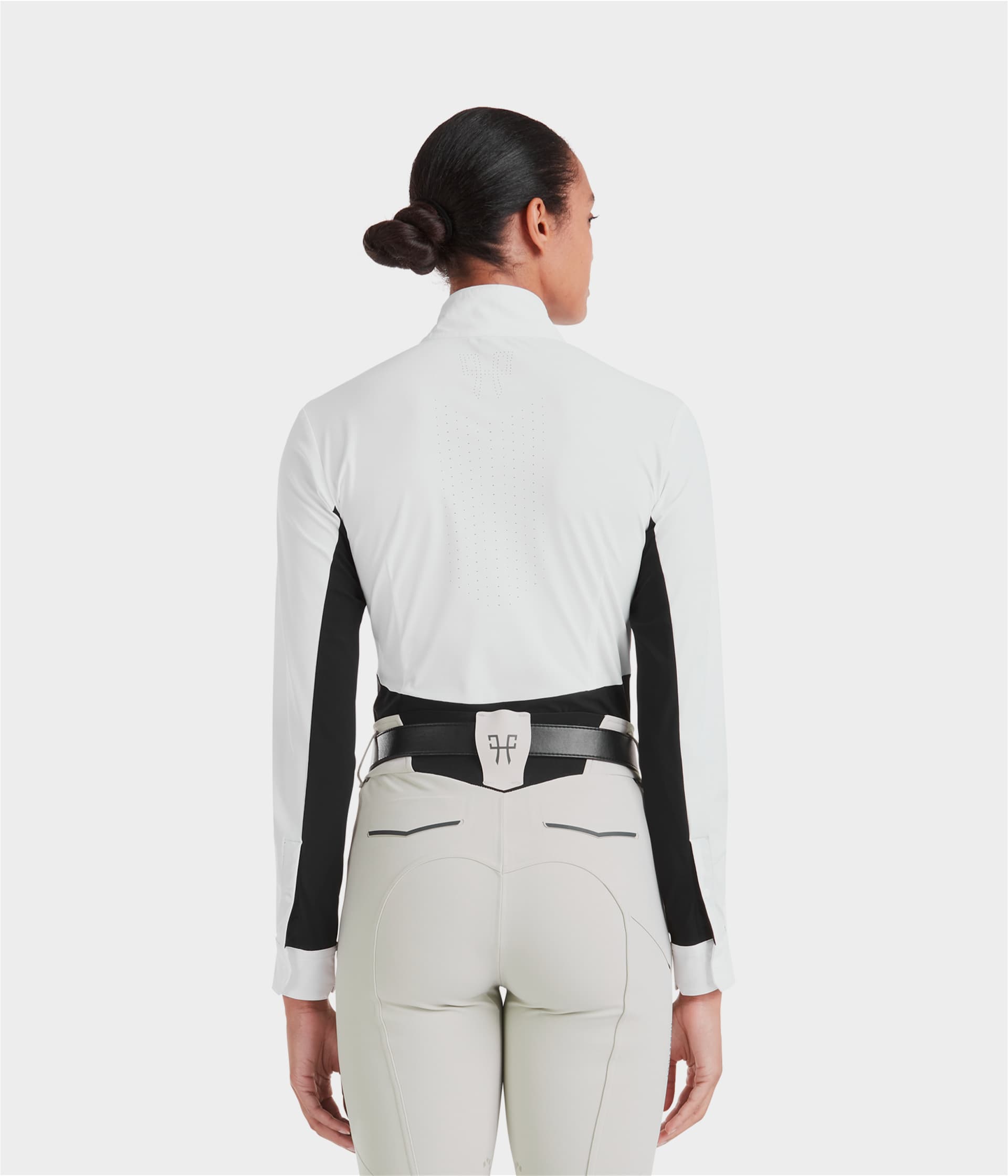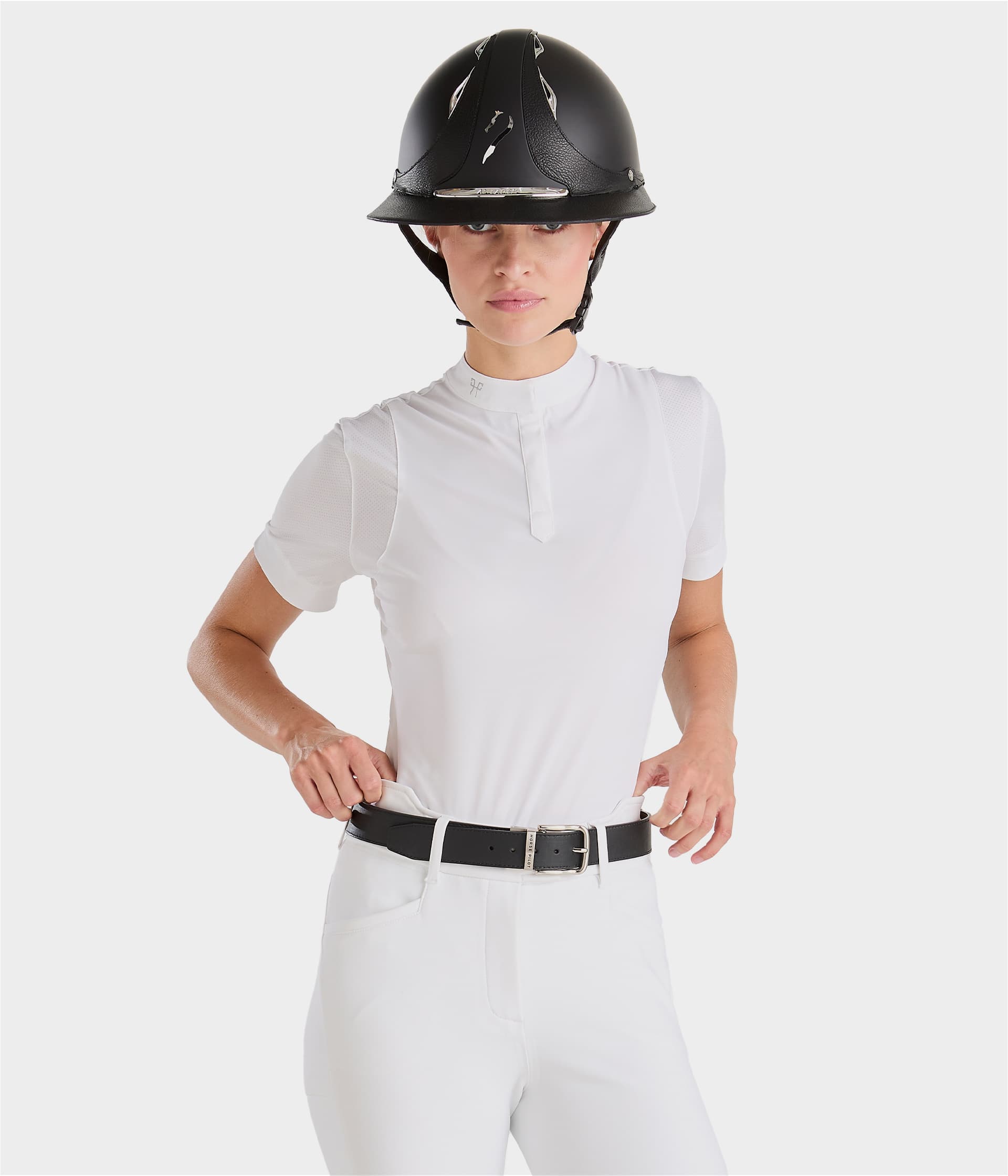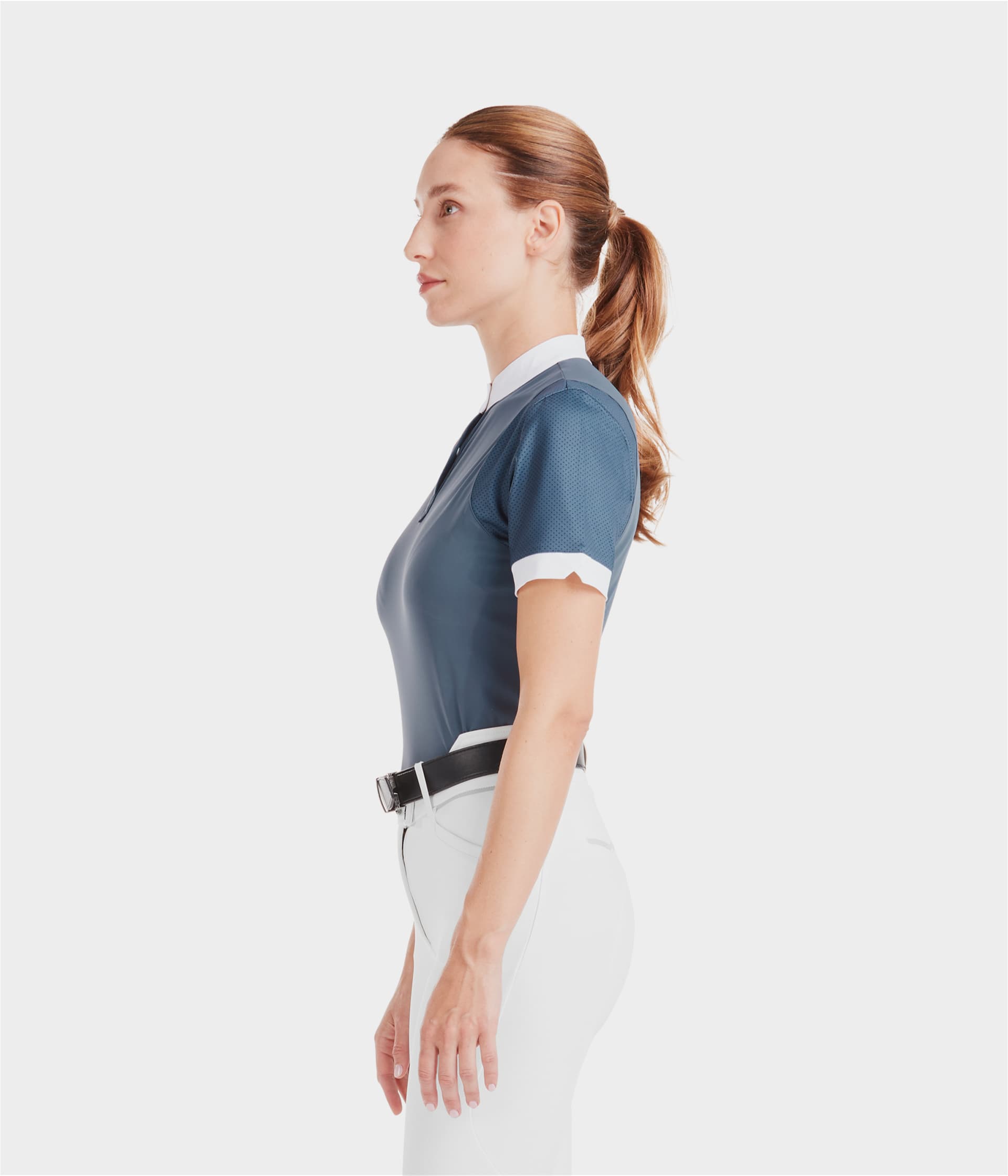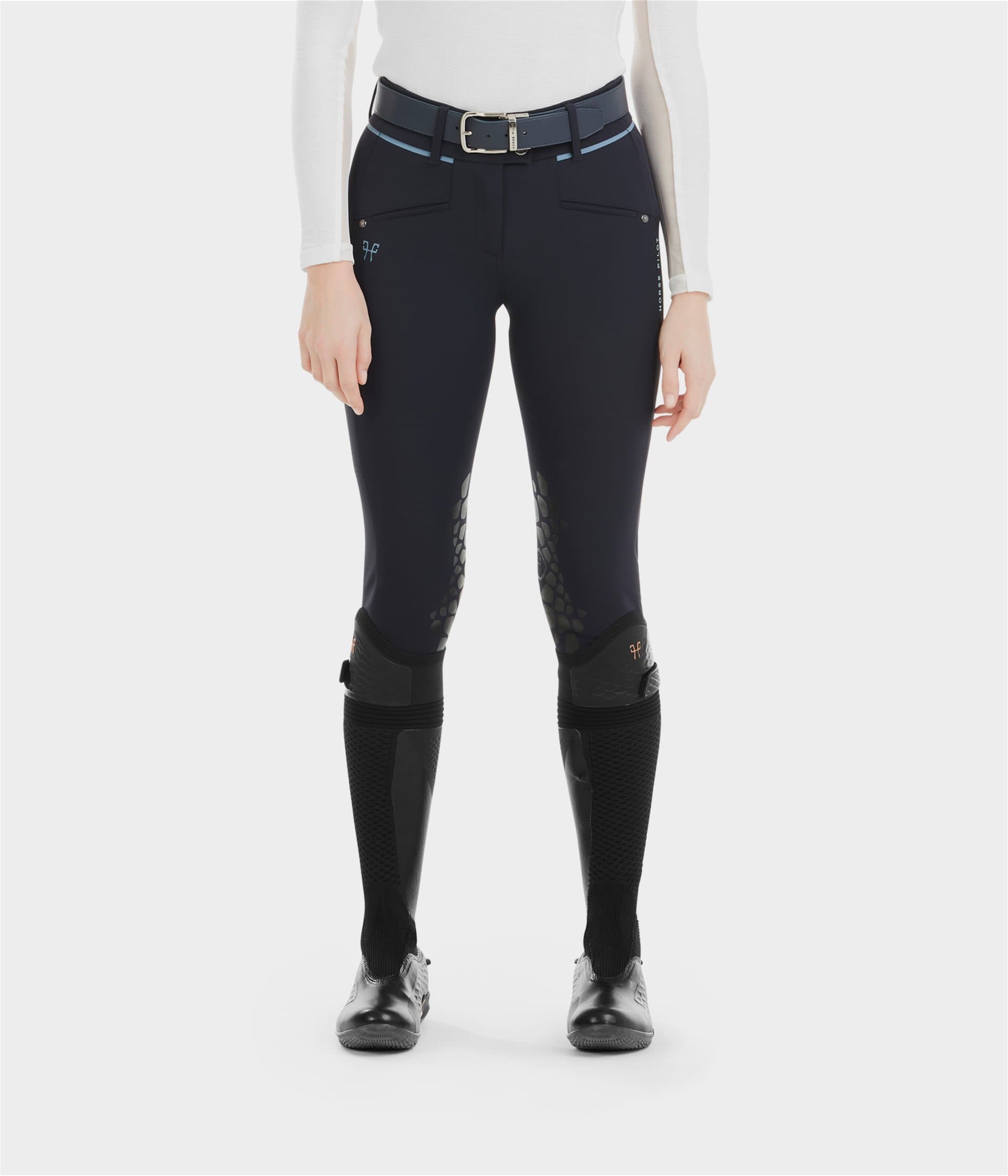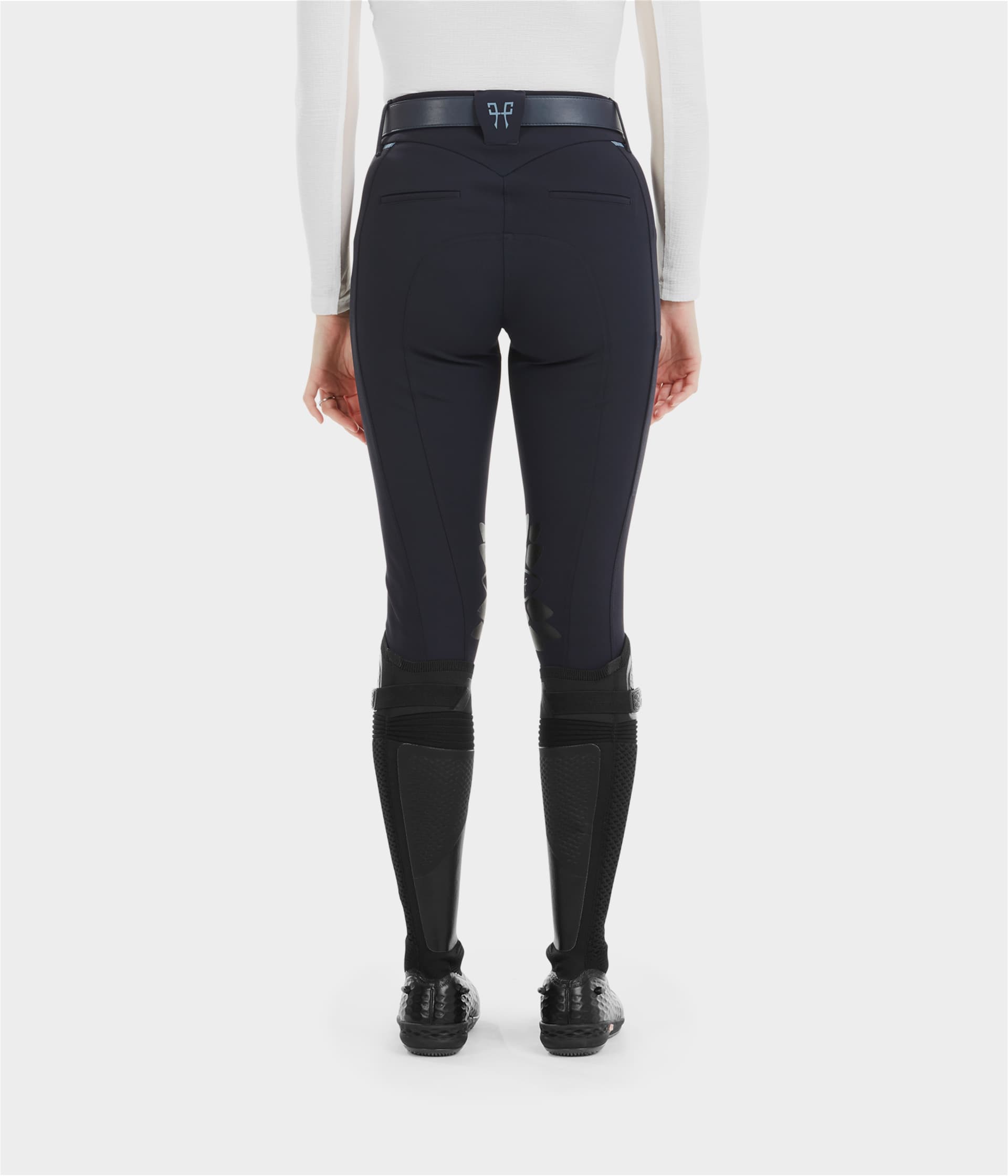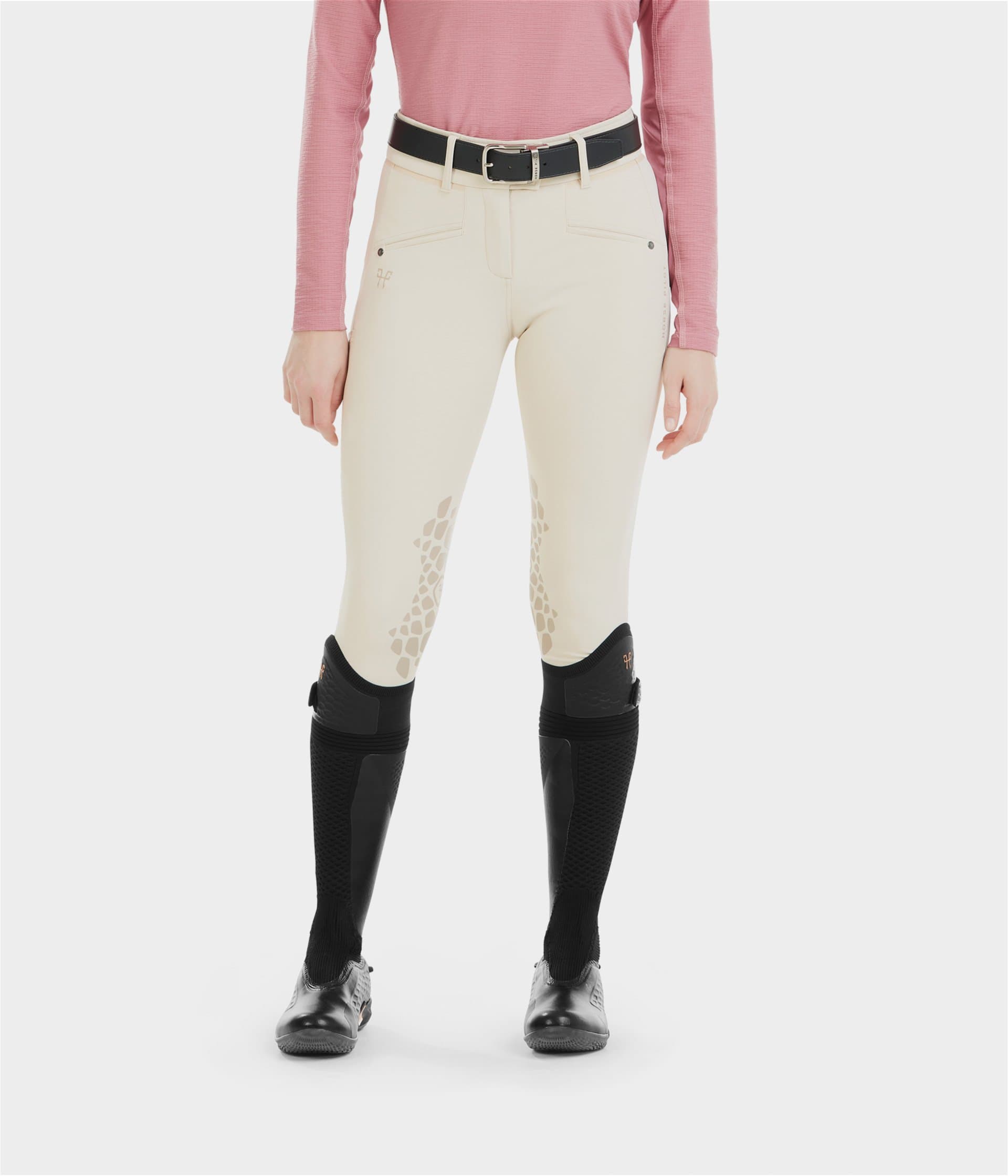Selection of women's eventing products
Discover a selection of products thought for women eventers:…
- New collection New color
Monica Long Sleeves
¥22,610
Aerolight Short Sleeves
¥20,160
What is eventing?
Eventing, tests not only the rider's skills, but also the horse's athletic ability. Sometimes referred to as the "Equestrian Triathlon", this equestrian sport encompasses three distinct events: dressage, show jumping and cross-country. Horse Pilot explores this all-round equestrian sport in detail.
What is eventing?
Eventing tests the versatility of riders and their mounts. Unlike other equestrian activities, which focus on a specific aspect. Dressage emphasizes grace and harmony between rider and mount. Show jumping evaluates the horse's jumping technique. Finally, cross-country is a test of endurance and courage. The horse and rider pair demonstrate their complicity over a course dotted with different types of natural obstacles.
The origins of eventing
The eventing has its origins in military riding in the 19th century. Its purpose was to assess the skills needed by riders and their horses to be effective on the battlefield.
In 1902, the Cadre Noir de Saumur organized the Championnat du Cheval d'Armes. Captain de Saint-Phalle, a Cadre Noir squire, wins it. Later, this championship became the eventing.
This equestrian discipline has been practiced at the Olympic Games since 1912. Competitors from each country compete for individual and team rankings. To this day, it still demands as much technique, endurance and precision as it did in its early days.
The different events of eventing
Eventing begins with the dressage test. Here, riders and horses perform a series of imposed figures, in elegant and precise movements.
Then, show jumping demonstrates the horse's ability to link a series of obstacles without fault.
Finally, cross-country is the most demanding event. It focuses on speed, endurance and the horse's ability to negotiate natural obstacles. Duos gallop over rough terrain and skillfully jump over obstacles such as rivers and tree trunks.
The rules and specifics of eventing
Strict rules govern eventing, notably to ensure the safety of horse and rider. They are imposed by the FFE or FEI and vary according to the level of competition. Each event is played in a single round. Judges award penalty points for non-compliance with technical and time requirements.
The dressage test
During the dressage competition, riders perform a series of compulsory figures in all three gaits, assessed by the judges. Precision, grace and harmony between rider and horse are thus scored between 0 and 10 points.
The show jumping test
In the show jumping competition, a show jumping course must be cleared without fault. Judges award penalty points for each obstacle knocked down or refused, as well as for exceeding the allotted time.
The cross-country event
The cross-country course is timed with an allotted time range for completion. It is galloped over varied terrain. Time overruns (or too much advance) result in penalties.
Competitors aim to score the fewest points in the standings to win this horse show. To ensure fairness among competitors, the running order for this event is drawn by lot.
Training for eventing
To excel in Eventing, the rider-horse pair must be in excellent physical condition. Physical preparation of the equine is crucial. Horses have to make a considerable effort, while maintaining their safety on varied terrain. So their training is rigorous and targeted, shaped around different activities.
Physical preparation of the horse
In-depth training develops the endurance, strength, handling and agility of eventing horses. This preparation is progressive to enable the horse to perform without excess fatigue.
The workload is adapted according to the level of competition. Adapted improvement programs incorporate regular training five to six days a week. Particularly with a view to maintaining the horse's physical condition.
Dressage for eventing
Dressage recovery is an equestrian practice of great precision. Movements must be elegant, precise and performed with grace. This equestrian discipline is often compared to an equestrian dance. Subtle communication between rider and horse is essential.
Training sessions focus on improving the horse's technique, muscling and flexibility. This contributes to conditioning the body for the effort to come.
Jumping for eventing
Jumping training for eventing horses is a particular challenge. Riders implement specific training, combining dressage, mechanization, sequencing, and verticalization of the jump.
This training compensates for the effects of cross-country and meets the requirements of jumping. It adapts above all to the horse's natural abilities. Constant analysis of performance, both in training and in competition, is decisive for effective training.
Eventing competitions
These equestrian events test the versatility of riders and their horses. Local or international, competitions vary in difficulty of obstacles and technical requirements. Riders of all levels showcase their equestrian skills and their bond with their horse.
Eventing competition levels
Competition Complet d'Équitation offers a range of competitions suited to riders of all levels. It ranges from initiation, known as "Intro" or "Amateur", to international competitions, including "Pro" or "Elite".
Each level presents increasing challenges of difficulty, technique and physicality for riders and their horses. Obstacles are increasingly complex and demanding. As a result, competition levels in eventing allow riders and horses to progress at their own pace.
Major eventing competitions
Prestigious major events attract the world's best riders. Among them, we find the Badminton Horse Trials in England, the Burghley Horse Trials, the World Equestrian Games and the Olympic Games.
These equestrian events bring together the elite of experienced riders and world-renowned horses. This offers eventing events of the highest level.
These equestrian competitions are not only a test of skills, but also a fascinating spectacle for riding enthusiasts. A true demonstration ground for the harmony between rider and horse.
Eventing champions
The Fédération Équestre Internationale has named New Zealand rider Mark Todd the "best rider of the 20th century". Also a multiple Olympic champion, he is also a two-time World Equestrian Games medalist.
The International Equestrian Federation has named New Zealand rider Mark Todd "best rider of the 20th century".
Other world-renowned riders are multiplying their awards, such as Germany's Michael Jung and England's William Fox-Pitt.
The inspiring performances make these champions role models for future generations of eventing riders. They demonstrate that success in this discipline is based on perseverance, talent and a strong partnership with their mounts.
To conclude, eventing is a versatile equestrian sport. It combines elegance, technique, endurance and speed, inherited from its military roots. Careful preparation is essential before an international eventing competition such as the eventing at a local equestrian center. The training schedule takes into account the different disciplines, the duration of the event and the level of competition. Competitors, from beginners to top riders, train rigorously to shine in official competitions. The ultimate goal is to bring the horse to the top of its physical and mental form to reach the podium.
